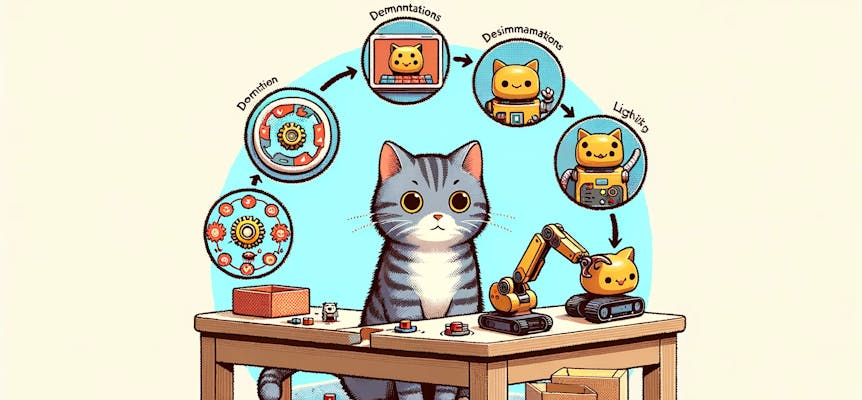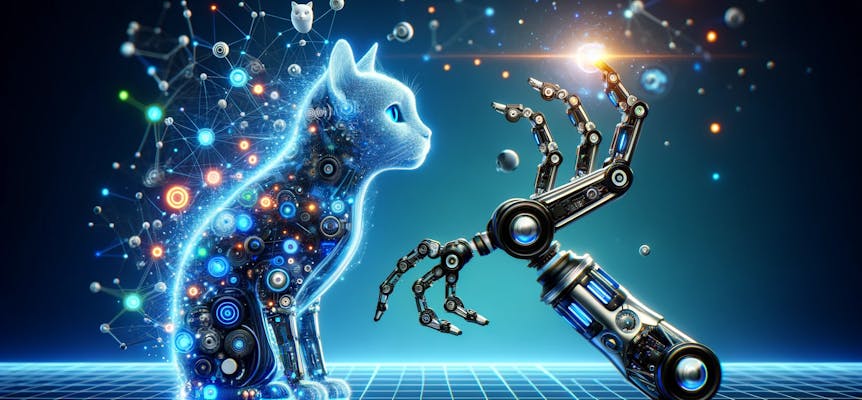
DeepMind's RoboCat: Revolutionizing Robotics with Adaptive AI
DeepMind's RoboCat: Revolutionizing Robotics with Adaptive AI
Posted on 12/1/2023 by Jonathan Kumin
Introduction to RoboCat

DeepMind's latest breakthrough in artificial intelligence and robotics is RoboCat, an AI model that can adeptly perform tasks across various robotic arms. This innovation marks a significant step in the field, demonstrating an AI agent's ability to learn and adapt to multiple tasks and different robotic models, thereby accelerating robotics research.
How RoboCat Learns and Adapts

RoboCat is based on DeepMind's multimodal model, Gato, which processes language, images, and actions in both simulated and physical environments. This foundational agent operates various robotic arms and improves from self-generated data, significantly reducing the need for human-supervised training. It represents a leap towards creating general-purpose robots, capable of handling diverse tasks with minimal demonstrations.
The Self-Improvement Training Cycle of RoboCat
![]()
RoboCat undergoes a unique five-step self-improvement training cycle. It starts with collecting demonstrations of a new task or robot, followed by fine-tuning, practice, and incorporation of this data into its existing training dataset. This cycle enables RoboCat to learn from both real and simulated robotic arms, constantly enhancing its capabilities and expanding its dataset to millions of trajectories.
RoboCat's Diverse Training and Task Adaptation

RoboCat's diverse training allows it to operate different robotic arms efficiently, adapting to more complex models with ease. For instance, after observing 1000 human-controlled demonstrations, RoboCat can successfully direct a new arm with an 86% success rate. It can handle tasks requiring precision and understanding, such as removing specific fruits from a bowl or solving shape-matching puzzles.
The Future of Robotics with RoboCat

The advent of RoboCat paves the way for a new generation of more versatile, general-purpose robotic agents. Its ability to rapidly learn and adapt to new tasks and robotic devices is a significant advancement in robotics. With each new task RoboCat learns, its efficiency in learning additional tasks increases, signifying a major step towards robots that can autonomously perform a wide range of tasks in various settings.
Conclusion

DeepMind's RoboCat represents a paradigm shift in AI and robotics. Its rapid learning capabilities, adaptability to different robotic arms, and self-improvement approach highlight the potential of AI in creating versatile and efficient robotic agents. As RoboCat continues to evolve, it sets the stage for future advancements in robotics, where robots can autonomously handle a myriad of tasks, transforming our approach to robotics research and application.